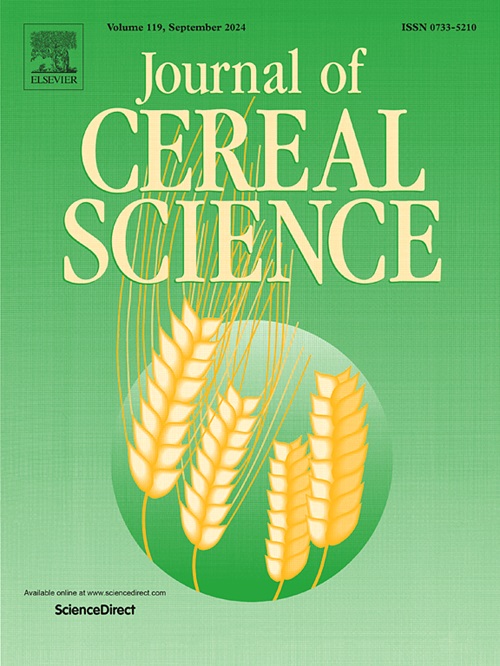Genetic exploration and molecular breeding of unique ready-to-eat soft rice for improvement of glycemic response
IF 3.7
2区 农林科学
Q2 FOOD SCIENCE & TECHNOLOGY
引用次数: 0
Abstract
Low amylose containing parboiled soft rice is a natural wonder having ready-to-eat (RTE) trait with a possible risk of high glycemic response (GR). In this present investigation, a typical Indian soft rice (var. Vogali Bora) was genetically explored for its RTE trait, and molecular breeding was performed to improve its GR. The lower amylose (AC) to amylopectin ratio, along with low resistant starch (RS) in soft rice, seems to be a possible biochemical basis for softness and high GR. The presence of fewer SNPs in the soft rice genome, along with down regulation of a cascade of trait-linked transcripts during grain filling, supported its japonica ancestry. However, the large number of SNPs in 65 starch synthesis related genes and distinct starch synthesis machinery conferred that they were specifically evolved for its unique RTE trait. Despite variation in zygosity for trait-linked molecular marker (RM190), RILs showed RTE trait but less than 20 % AC is prerequisite to exhibit softness. Concerning soft rice, inbred lines showed improved GR in mice models due to elevated AC and RS content of F2:3 seeds. RILs with moderate GR are promising sources for advancing inbred lines to generate healthy RTE soft rice with improved GR.

改善血糖反应的独特即食软米的遗传探索和分子育种
含有低直链淀粉的半煮软米是一种天然奇观,具有即食(RTE)特性,可能存在高血糖反应(GR)风险。在本研究中,对一种典型的印度软米(Vogali Bora品种)的RTE性状进行了遗传探索,并对其进行了分子育种以提高其GR。软米中较低的直链淀粉(AC)与支链淀粉的比例,以及低抗性淀粉(RS),似乎是软米柔软和高GR的可能生化基础。支持其日本血统。然而,65个淀粉合成相关基因的大量snp和不同的淀粉合成机制表明,它们是专门为其独特的RTE性状而进化的。尽管性状连锁分子标记(RM190)的合合度存在差异,但RILs表现出RTE性状,但低于20%的AC是表现出柔软性的先决条件。对于软米,自交系由于提高了F2:3种子的AC和RS含量,在小鼠模型中表现出更高的GR。中等GR的rls是推进自交系生产健康的改良GR的RTE软水稻的有希望的来源。
本文章由计算机程序翻译,如有差异,请以英文原文为准。
求助全文
约1分钟内获得全文
求助全文
来源期刊

Journal of Cereal Science
工程技术-食品科技
CiteScore
7.80
自引率
2.60%
发文量
163
审稿时长
38 days
期刊介绍:
The Journal of Cereal Science was established in 1983 to provide an International forum for the publication of original research papers of high standing covering all aspects of cereal science related to the functional and nutritional quality of cereal grains (true cereals - members of the Poaceae family and starchy pseudocereals - members of the Amaranthaceae, Chenopodiaceae and Polygonaceae families) and their products, in relation to the cereals used. The journal also publishes concise and critical review articles appraising the status and future directions of specific areas of cereal science and short communications that present news of important advances in research. The journal aims at topicality and at providing comprehensive coverage of progress in the field.
 求助内容:
求助内容: 应助结果提醒方式:
应助结果提醒方式:


